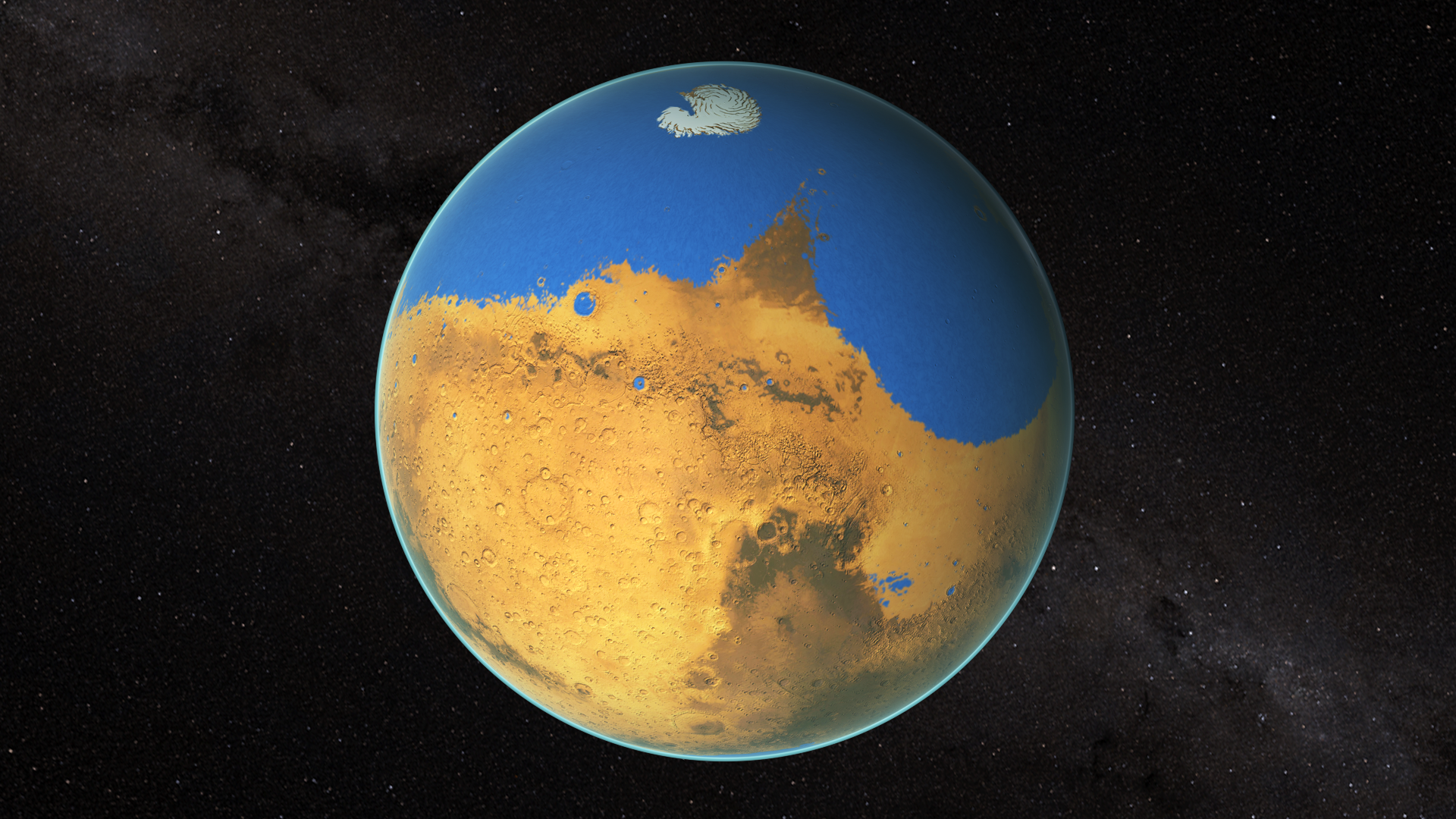A Once-Blue Planet

NASA research suggests an ocean once covered the surface of Mars.
Modern Mars is dry and dusty, but scientists have long suspected that water once flowed on the surface. The question has been: how much water? NASA scientists estimate that Mars used to have at least 5 million cubic miles of water. That's more than the volume of water found within Earth’s Arctic Ocean. If that much water were present on Mars today, it would cover 19 percent of the surface and reach a maximum depth of a mile. These results are based on detailed observations of two slightly different forms of water in Mars’ atmosphere. By comparing the findings for water on Mars today with water trapped in an ancient Mars meteorite, the scientists determined how much water escaped from the planet into space and, thus, how much water Mars likely had. Watch the video to learn more.
Find out how Mars lost its primitive ocean in this video.

Early Mars would have looked much different than it does today, with a significant portion of its surface covered by water.

Scientists estimate Mars has lost 87 percent of the water from its ocean to space.

The remaining 13 percent of Mars' water is stored within ice caps at the planet's poles.
For More Information
See NASA.gov
Credits
Please give credit for this item to:
NASA's Goddard Space Flight Center
-
Writer
- Elizabeth Zubritsky (ADNET Systems, Inc.)
-
Scientists
- Geronimo Villanueva (Catholic University of America)
- Michael Mumma (NASA/GSFC)
-
Producer
- Dan Gallagher (USRA)
-
Video editors
- Dan Gallagher (USRA)
- Swarupa Nune (InuTeq)
-
Animators
- Walt Feimer (HTSI)
- Brian Monroe (USRA)
- Michael Lentz (USRA)
- Chris Smith (Self)
-
Videographers
- Rob Andreoli (Advocates in Manpower Management, Inc.)
- John Caldwell (Advocates in Manpower Management, Inc.)
-
Narration
- Dan Gallagher (USRA)
-
Narrator
- Dan Gallagher (USRA)
Release date
This page was originally published on Tuesday, March 31, 2015.
This page was last updated on Wednesday, May 3, 2023 at 1:49 PM EDT.
